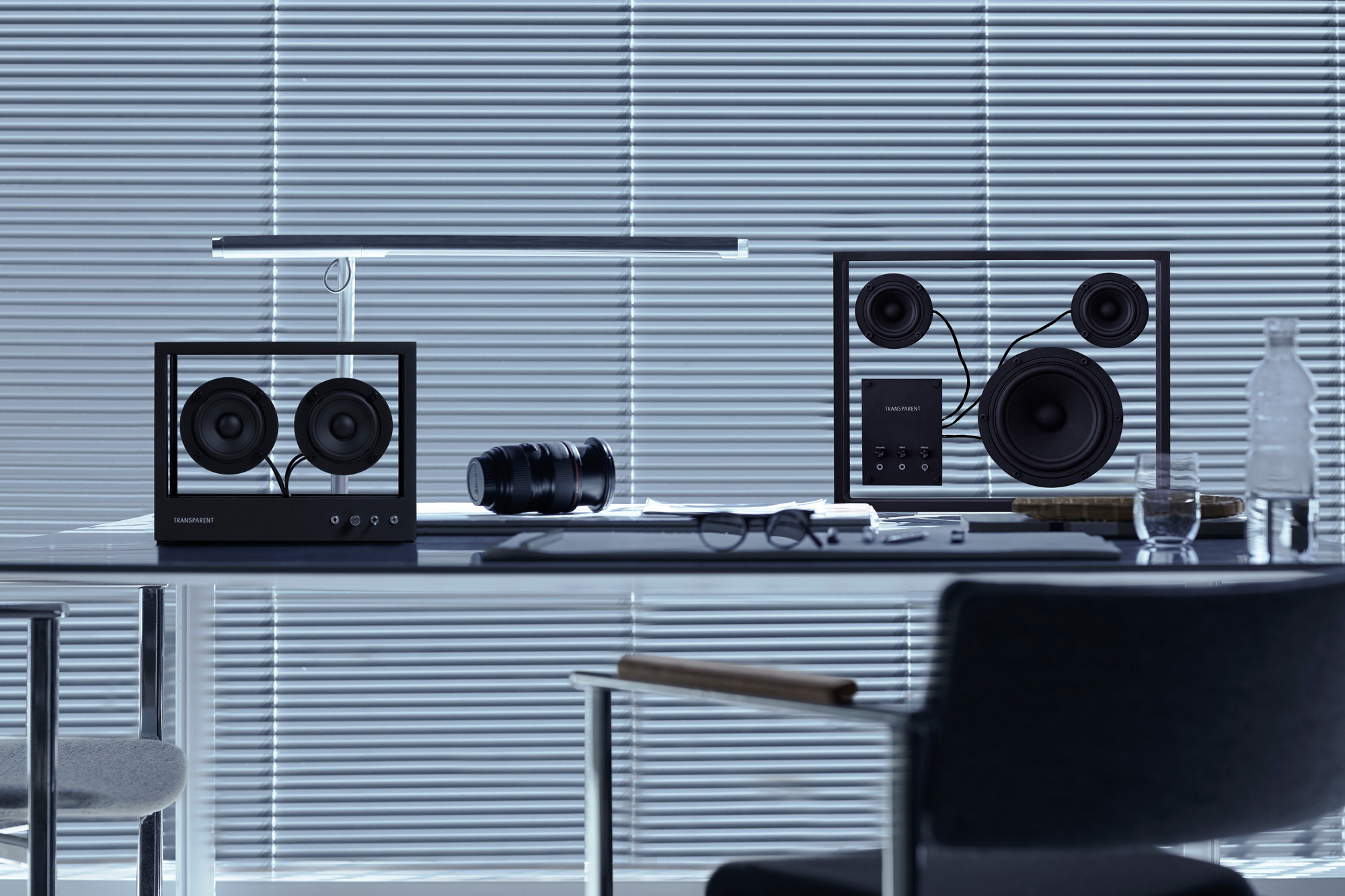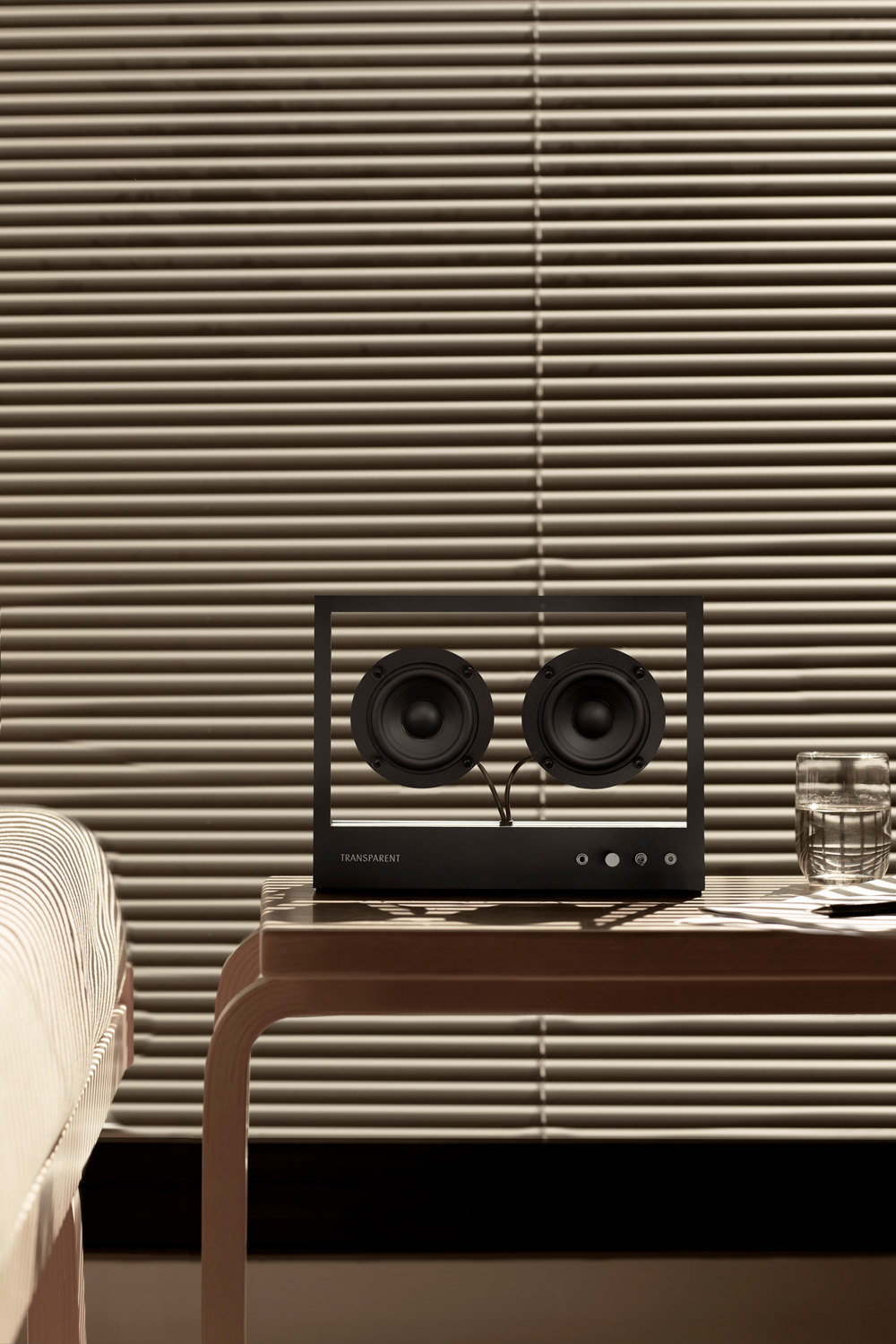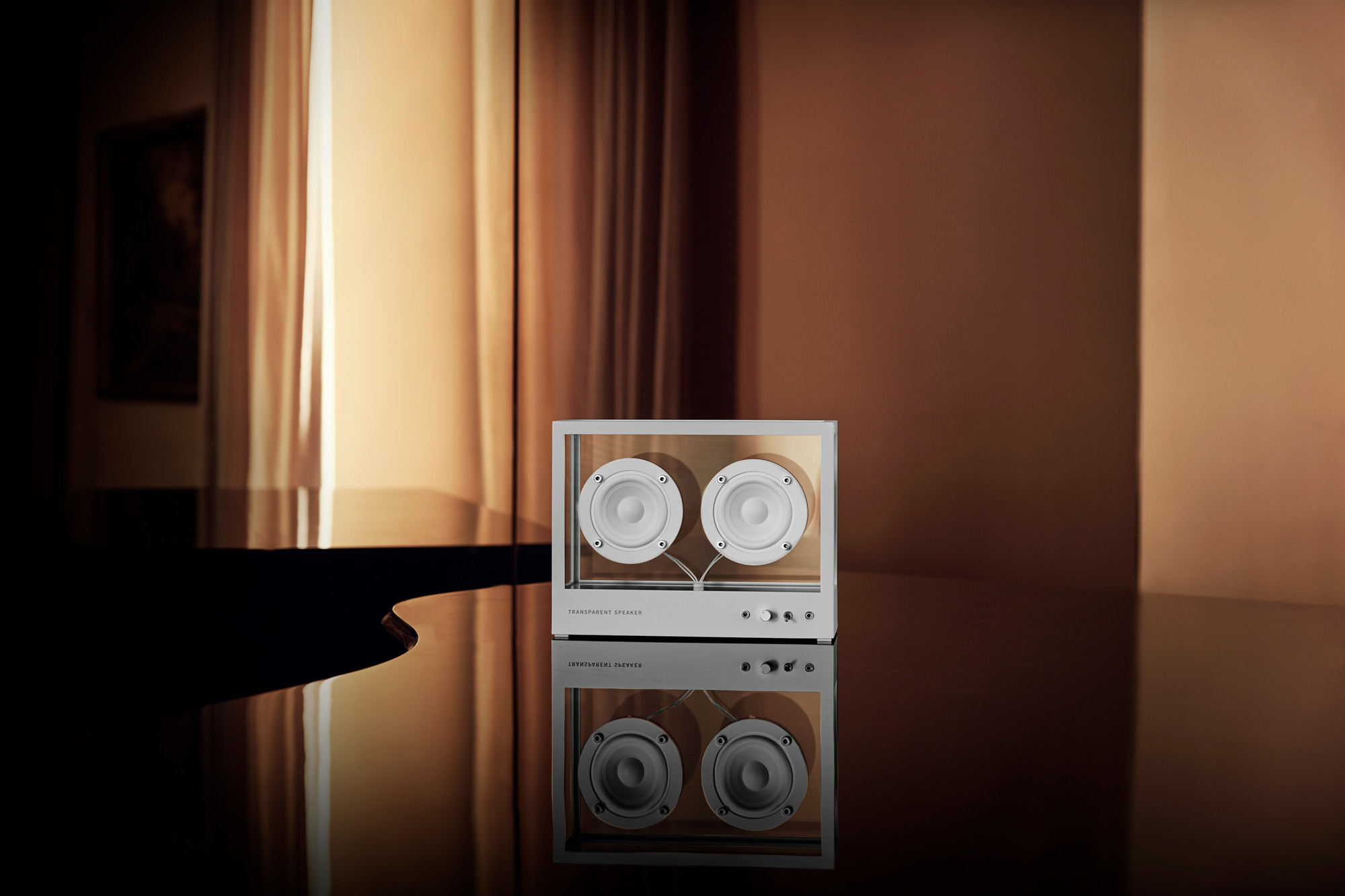The speakers solving the aesthetics battle between interiors and home electronics.
Compounded by a growing increase in conscious consumerism, there is an increase in demand for high quality, timeless pieces and ‘good’ design should now encapsulate the make-up of a product as much as the aesthetic. Award-winning Stockholm-based audio brand, Transparent are setting the tone, quite literally, for how brands and designers need to adapt to not only meet this change, but lead it. With a clear mission to become the first circular tech brand, they are giving a new meaning to ‘transparency’, which starts with their speakers and goes all the way through to their values and ethos.
Born out of a design issue that has always overshadowed speaker companies, Founders Martin Willers and Per Brickstad set out to create a speaker that would end the aesthetic struggle between electronics and interior design. The result is a highly striking aesthetic and equally rich sound, that is sought after by the likes of Will.I.Am, Swedish House Mafia and Robyn to name a few. With a sustainable design ethos as important to Martin and Per as solving the aesthetic battle, their innovation in the audio industry doesn’t end here. In a bid to combat our throwaway culture, they designed speakers that get better with age, rather than becoming obsolete. Through their use of modular electronics, all their speakers can be easily upgraded as technology evolves or an owner’s preference changes, which vastly minimises on electronic waste.
Martin and Per have created a highly commendable brand that embodies the illusive balance of a brand that acts as good as its product looks. We had the opportunity to speak to both of them about their journey from a KickStarter project to lining the goodie bags at the BRITS and what it means to truly be a ‘transparent’ brand.

Let’s take it back to the beginning of your journey. How did the two of you first meet?
Martin: We are both from Stockholm, but we met in a design school in northern Sweden call Umeå Insititute of Design. I rented a small house far out in the woods so I would often sleep on Per’s couch in town after partying. We did some projects together over the summer holidays and that group of friends would later form People People.
People People worked on consumer electronics and for major international consumer electronics brands in between projects. We proposed the Transparent Speaker in a blog post that went live on 11/11/11. In the post, we talked about sustainable design philosophy and a solution to the war going on in the living rooms of the world: the never-ending feud between home electronics and interior design. The post went viral. People literally begged us to produce it, leading us to complete a successful Kickstarter campaign in 2013.


Your products are as much an interior design piece as they are a speaker. This is clearly something important to you during the design process.
Both: Absolutely. We wanted to make a speaker that could end the ongoing battle between home electronics and interior design, which we have achieved since we have been selling especially well in interior stores like The Conran Shop.
How would you describe your aesthetic?
Both: Our products are designed to be timeless and minimalist, slotting neatly into any style, any place or any time. Apart from a long-lasting quality and appearance, this means a modular design that can be repaired and upgraded as and when new technology becomes available.
What is the meaning behind ‘transparent sound’?
Both: There are a few meanings behind this. First, being transparent means stopping corporate bullsh*t and communicating openly and honestly with our customers, backers and extended community. Second, we found that design is often used to put a fancy surface onto something. We wanted to do the exact opposite. We wanted to show products as they really are. The main materials of our products, aluminium and glass, are chosen for their longevity and ability to exist in recycled material streams.
And finally, in the world of audio, the term transparent audio refers to a loudspeaker’s ability to channel the true intention of the artist through to the listener. It’s our ambition to bring the listener closer to the music, to offer a rich and authentic listening experience. We don’t decorate, instead, we celebrate the iconic, music-making elements.

What role does music play in your lives? Are there particular artists that inspire you?
Martin: We are both music lovers. Per can take a tone and fiddle on a guitar. I think you can tell with his appreciation for Daniel Norgren. He even got Daniel to sign one of our speakers when he was passing through the office!
I’m more of an express-it-with-my-body type! I’ve always loved dancing. My mom tells me that she danced a lot with me as a baby when I had colic and was screaming a lot, so I was literally breastfed with Tina Turner!
Your range of Transparent Speakers are effortlessly cool and timeless, and have attracted the likes of Will.I.Am, Robyn and Steve Angello. Did you expect this collection to have the level of success that it has?
Martin: I think these things can always be hard to predict. We simply wanted to design and build a speaker that helped solve the home electronics/interior design battle, while also lasting longer. We are super proud that our products have attracted such an esteemed audience, and even featured as the centrepiece of the BRIT awards’ artist goody bags! The best feeling is seeing someone we love and respect share their love for our product on Instagram. It makes all the long nights feel worth it.
How did you come up with the design? What was your inspiration?
Per: Making a transparent design was something I was experimenting with already back in school. How can an object blend with its environment while still retaining a clear identity? We have a technical specification on how much air we need to move to make certain sound waves, so it’s then all about celebrating those iconic elements that actually do that hard work.


There’s always a fine line when it comes to form and function. How would you describe the relationship between the two?
Martin: We started the speaker with a design idea: how should the speaker look to blend in and add value to a living room? But the next stop was very functional. For the large speaker it was “how big does this need to be to get me off Per’s couch and dancing?”! It turned out it needed a 6,5-inch woofer in a 10-litre enclosure. This resulted in a unique design that is both timeless and understated.
Designers’ role in sustainability is becoming increasingly scrutinised. Is this something that is important to you both?
Both: Our vision is to become the first circular tech brand. We aim to achieve this by making timeless, modular electronics that are built to be forever upgradable. We believe products should get better with age, and that companies are responsible for removing electronic waste from the world. That is why our audio products are designed so that our users can easily replace old or obsolete parts as new technologies emerge. By doing this, they stand the test of time and aren’t simply cast aside when a newer model becomes available, causing more avoidable waste.
Finally, a difficult choice I’m sure, but which are your favourite speakers from your range?
Martin: I love the large speaker. It makes me dance.
Per: The Upcrafted steel edition. Both my wife and I find it really magical.




